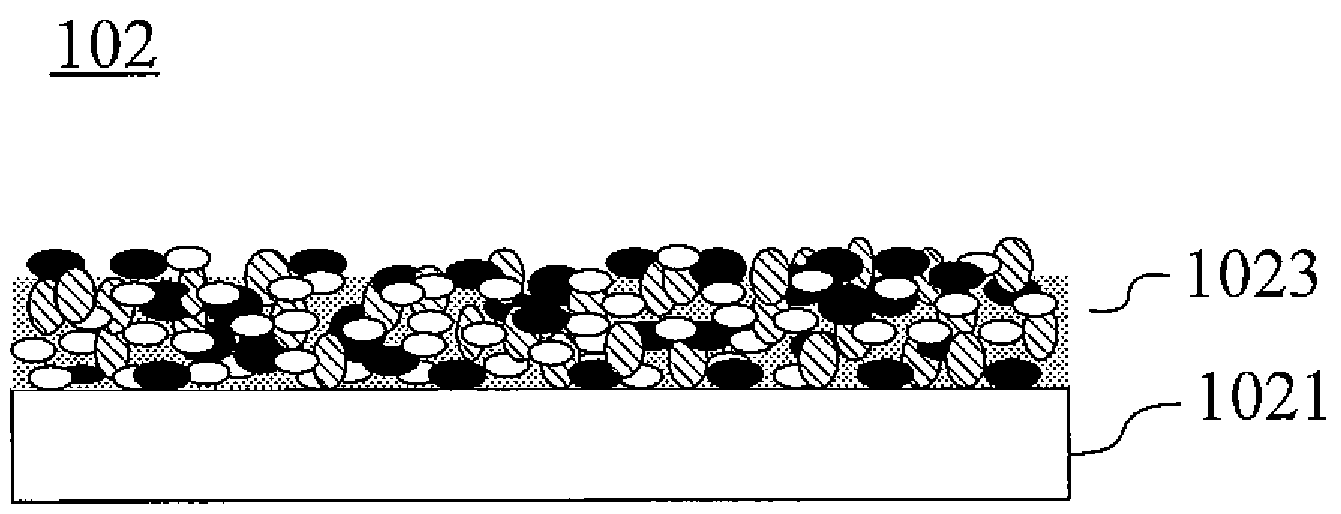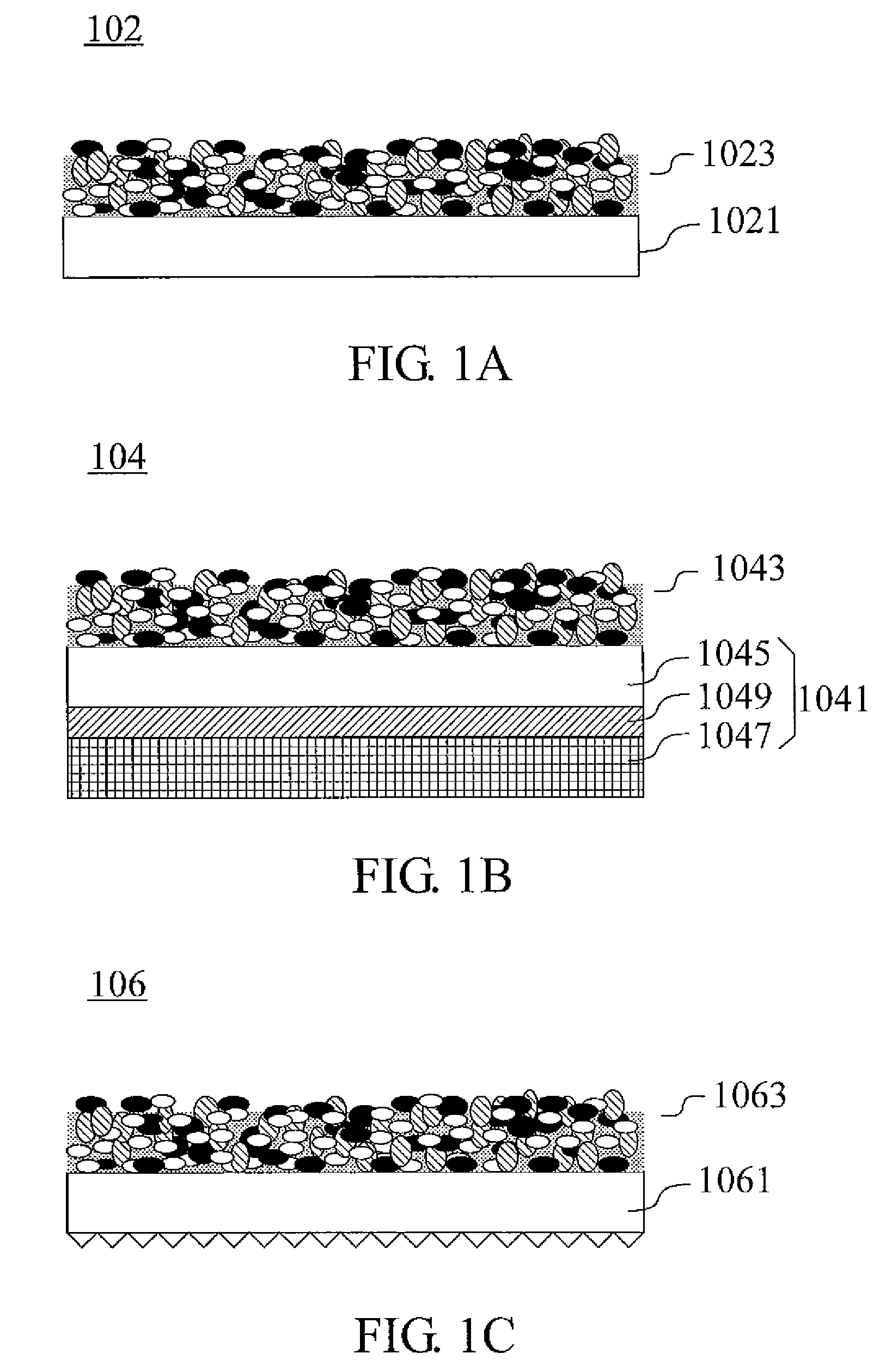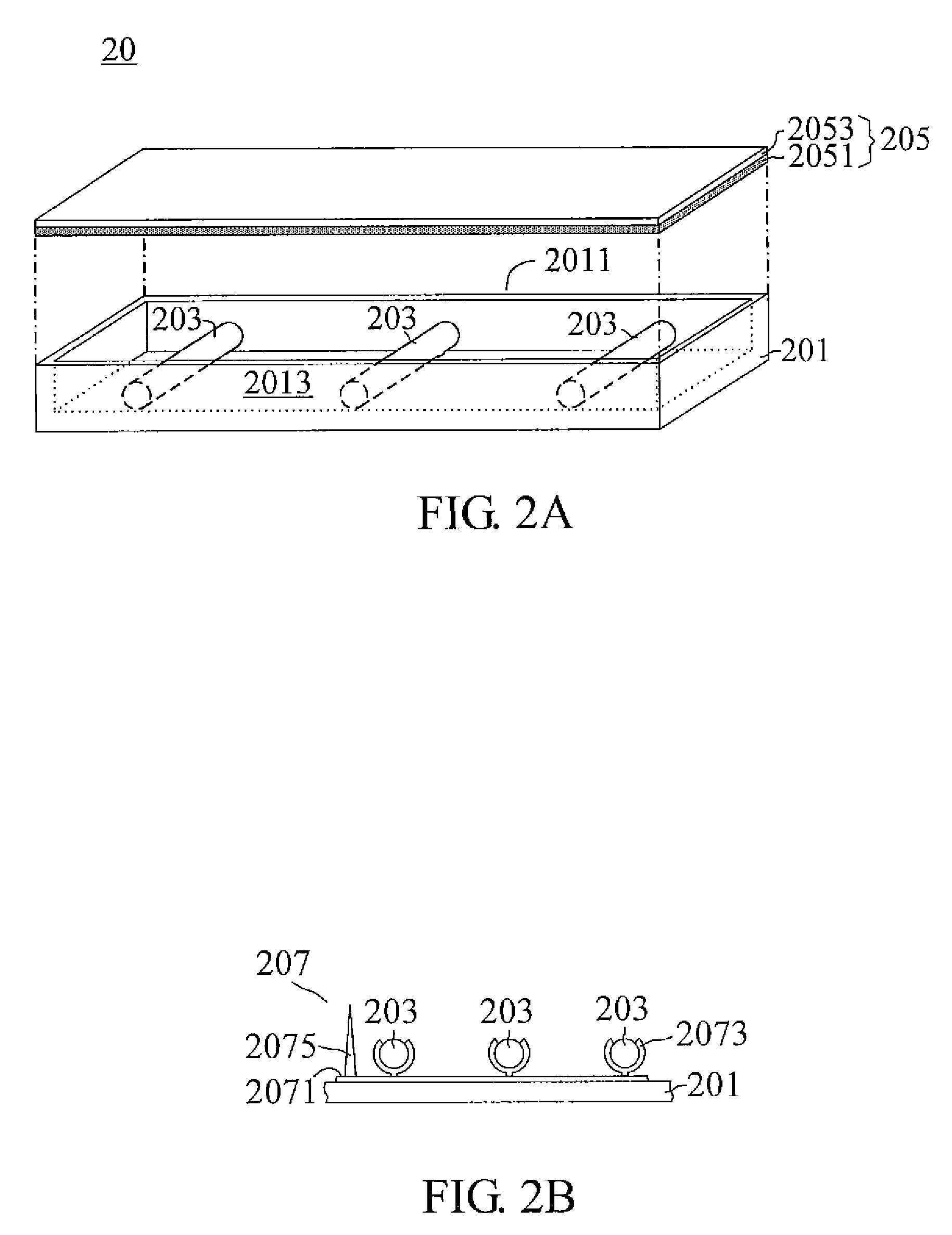Wavelength converting structure and manufacture and use of the same
a technology of wavelength conversion and structure, applied in the direction of instruments, discharge tube luminescnet screens, synthetic resin layered products, etc., can solve the problems of low production yield, difficult to produce large-sized lamps and allow wavelength conversion in large areas, and substantial increase in costs
- Summary
- Abstract
- Description
- Claims
- Application Information
AI Technical Summary
Benefits of technology
Problems solved by technology
Method used
Image
Examples
example 1
[0130]900 g of the adhesive solution A was put into a 2000 ml beaker and stirred by a magnet for 10 mins. Then, 900 g of phosphor powder was added thereto, and the mixture was stirred by a mechanical impeller for 20 mins at room temperature to get a homogeneously mixed slurry. Once mixed homogeneously, the slurry was put into an air pressure type pulsing circulator for stirring for 30 mins before being coated onto a PET substrate (125 μm in thickness) by a slot coating method. During slot coating, the film was coated with a coating pressure of 0.12 MPa and a speed of 15 cm / min, with the coating slot being spaced 15 μm from the PET substrate. The resulting wet film was then dried with a hot air at 50° C., thus obtaining a sample that had a wavelength converting coating of 12 to 15 μm in thickness on the PET substrate.
[0131]The brightness testing method I was adopted, where the area for placing the sample was in a size of 30 cm in length and 20 cm in width and the sample was 1.5 cm aw...
example 2
[0133]The slurry preparation, coating and drying steps of Example 1 were repeated, except that the slurry was coated onto a PET substrate of 125 μm in thickness to obtain a sample that had a wavelength converting coating of 12 to 15 μm in thickness on the PET substrate.
[0134]Subsequently, using a scraper, an acrylic-based adhesive from PANTECH TAPE CO., Ltd. (No. S3277) was coated onto the other side of the sample to achieve a thickness of 25 μm. Then, the sample was laminated with an acrylic-based substrate (2 cm in thickness) and a PET protection substrate (25 μm in thickness) together by a roll laminator from CSUN MEG. Ltd. (No. CSL-M25R). Thus, the adhesive side of the sample was laminated onto one side of the acrylic-based substrate while the PET protection substrate was laminated onto the other side of the acrylic-based (polymethyl methacrylate) substrate. The laminating process was carried out at a speed of 1.5 m / min with a pressure of 3 kgf / cm2 at 40° C. Similarly, the above...
example 3
[0136]A metered amount of phosphor powder and a metered amount of adhesive solution were formulated into mixtures with the weight ratios listed in Table 3, respectively. The mixtures were then put into six 50 ml sealed vials respectively to be stirred therein by a magnet for 10 mins, followed by an ultrasonic oscillation for another 10 mins to obtain six slurries.
[0137]A PET substrate (125 μm in thickness) sized 10 cm in width and 15 cm in length was adsorbed onto a vacuum adsorption table and was coated with one of these slurries by a meyer rod coating approach with a coating speed of 10 m / min. Such a coating process was repeated for the six slurries to obtain six PET substrates coated with individual slurries, which were then subjected to a natural drying process through air circulation for 3 mins to finally obtain coatings in a thickness of about 15 to 18 μm.
[0138]The brightness testing; method I was adopted, where the area for placing the sample had a size of 30 cm in length and...
PUM
| Property | Measurement | Unit |
|---|---|---|
| Fraction | aaaaa | aaaaa |
| Fraction | aaaaa | aaaaa |
| Percent by volume | aaaaa | aaaaa |
Abstract
Description
Claims
Application Information
 Login to View More
Login to View More - R&D
- Intellectual Property
- Life Sciences
- Materials
- Tech Scout
- Unparalleled Data Quality
- Higher Quality Content
- 60% Fewer Hallucinations
Browse by: Latest US Patents, China's latest patents, Technical Efficacy Thesaurus, Application Domain, Technology Topic, Popular Technical Reports.
© 2025 PatSnap. All rights reserved.Legal|Privacy policy|Modern Slavery Act Transparency Statement|Sitemap|About US| Contact US: help@patsnap.com



